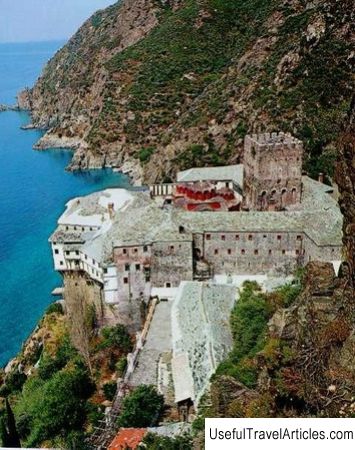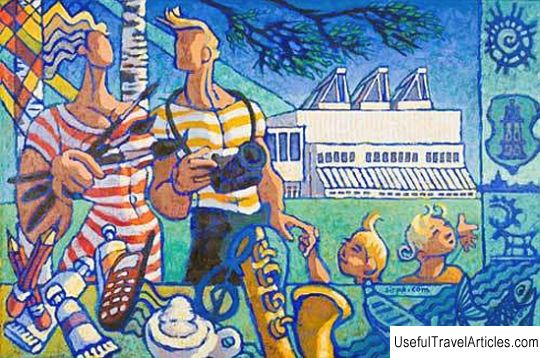Monasteries of Mount Athos description and photos - Greece: Halkidiki
Rating: 7,5/10 (100 votes) Monasteries of Mount Athos description and photos - Greece: Halkidiki. Detailed information about the attraction. Description, photographs and a map showing the nearest significant objects. The name in English is Monasteries of Mount Athos. Photo and descriptionAthos is a mountain and peninsula in Greece (the so-called "eastern finger" of the Chalkidiki peninsula) It is here that the largest center of Orthodox monasticism is located - the "Autonomous Monastic State of the Holy Mountain", which occupies almost the entire Athos peninsula. The Holy Mountain is home to twenty stauropegic Orthodox monasteries under the direct ecclesiastical jurisdiction of the Patriarchate of Constantinople. The Athonite monks also refer to the Holy Mountain as “inheritance” and “the garden of the Mother of God.” The Athos Peninsula (in ancient times also known as “Akti”, which means “rock” in Greek), was inhabited since ancient times. Unfortunately, very few historical documents about ancient Athos have survived. It is believed that the formation of the monastic community on Athos as such took place at the end of the 7th century, although based on a number of sources it can be confidently asserted that Athos was the abode of monks as far back as 3-4 centuries. The real flourishing of Orthodox Athos began at the end of the 9th century, after the Byzantine emperor Basil I the Macedonian proclaimed Athos exclusively the abode of monks. Officially, the name "Holy Mountain" was assigned to Athos in the 12th century. The largest and most famous holy monastery of Athos is the monastery of the Great Lavra, built in 963 by St. Athanasius of Athos. The main holy relics of the Great Lavra are the cross and the rod of St. Athanasius, two miraculous icons - "Economissa" and "Kukuzelissa", parts of the Life-giving Cross of the Lord, as well as the relics of Saints Basil the Great, Andrew the First-Called, Ephraim the Syrian, etc. The second in the hierarchy of the Athonite monasteries is the Vatopedi monastery, dating from the end of the 10th century. Among his most valuable relics, it is worth noting parts of the Life-giving Cross of the Lord, the venerable belt of the Most Holy Theotokos, the relics of Saints Gregory the Theologian, Andrew of Crete, the Apostle Bartholomew, the Great Martyr Panteleimon, as well as the miraculous icons "Joy" and "Tsaritsa". Iversky the monastery (founded in the 980s and is the third in the hierarchy of the Athonite monasteries) is known for its many holy relics and the miraculous icon of the "Goalkeeper" (revered since the 9th century). The Pantokrator monastery houses one of the most revered miraculous Athonite icons - the Mother of God Gerontissa, and in the Catholicon of the Stavronikita monastery there is a mosaic icon of St. Nicholas the Wonderworker, found in the sea. However, without exception, all the Athonite monasteries own one or another truly unique and priceless relics. Architectural solutions are no less interesting. The monasteries of the Holy Mountain are famous for their excellent libraries, which contain many unique ancient manuscripts in different languages, important historical documents and a huge number of printed publications, among which there are many rare editions. It is worth considering that access to the holy land is strictly regulated, and women are strictly prohibited. Men must obtain a special permit to visit the Holy Mountain. However, many monasteries are visible from the sea, so you can see them and admire the incredibly picturesque peninsula by taking a fascinating boat trip along its shores.       We also recommend reading Ice Sports Palace description and photos - Russia - Karelia: Kondopoga Topic: Monasteries of Mount Athos description and photos - Greece: Halkidiki. |





